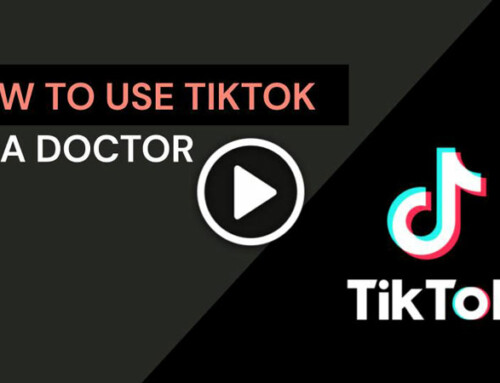
Consumers spend surplus savings on cataract and refractive surgery
Five key messages to work into your marketing to ensure your practice gets a piece of the pie
Back in May 2021, we predicted that cataract and refractive surgery clinics would benefit from consumers who had amassed surplus disposable income from lockdown savings. This article was published here in the May issue of CRSTEurope.
Our predictions were based on the following headlines…
- “How the pandemic altered financial behaviors for many—and some may change for good”
- “Consumers to unleash trillions of dollars in excess savings when pandemic ends” and
- “Lower-income COVID-19 aid recipients seen boosting consumer spending.”
These headlines suggested an interesting repercussion of the COVID-19 lockdowns: increased spending. Although past economic recessions were associated with a decrease in disposable income, the COVID-19 lockdowns were linked with a surge in personal savings for many people.
We can now confirm since this pandemic began, official statistics show that many households saved record amounts. Lockdowns combined with financial uncertainty generally caused people—particularly those working from home—to spend less on nonessential items, travel, and dining out.
In fact, consumers in the world’s largest economies amassed $2.9 trillion in extra savings during Covid-related lockdowns.7
How did cataract and refractive surgeons benefit?
According to the Refractive Surgery Council, laser vision correction procedure growth for the first half was the strongest it had been in nearly a decade. The 82% year-over-year growth, fueled by the strong quarter-over-quarter performance, resulted in 231,503 LASIK, SMILE, and PRK procedures performed, representing a nearly 200% increase over Q2 2020 during the height of the nationwide pandemic shutdown.8
Is there still time to benefit from the savings surplus?
We think so.
As people return to retailers, restaurants, entertainment venues, tourist hot spots, and sports events it’s clear that people still have money and desire to spend. But before we share the 5 ways that your clinic can exploit this, there are a few psychological mechanisms at play that you should be aware of…
Your marketing must be emotional
Emotion drives purchasing behaviour. Good marketers use this concept all the time, and examples of emotion-based campaigns are widespread. Luxury goods target people’s feelings of self-worth and acceptance; athletic brands target people’s desires for adventure and competition, and products such as fragrances and lingerie target people’s feelings of love and sexual desire.
Context is important because emotions and consequent buying decisions are often directly influenced by current reality. For example, before this pandemic, people bought cars and went on holiday. During this pandemic, the focus turned to buy fitness subscriptions, home entertainment, and toilet rolls. Now that many countries around the world are lifting lockdowns, people are starting to spend money on things like holidays, shopping, and eating out. Successful practices must adjust their marketing messages to suit the public’s emotions and the context for their feelings.
Back up the emotion with logic
Once consumers have invested emotionally in a product or service, they seek to justify these emotions. Their logic doesn’t have to be particularly convincing. For example, many people justify making a purchase because there’s only one left, it’s on sale, or it may be useful in the future.
Offering a more deeply grounded reason may convince people more quickly. This is especially important when a product or service is expensive, it involves an element of fear or risk (e.g. surgery), or consumer confidence is low because of economic uncertainty.
Leverage patients’ desires for transformation
Whereas demand in the hospitality sector plummeted during this pandemic, the health care and fitness sectors experienced growth because consumers began reevaluating their lifestyle choices and future well-being.
Although cataract surgery has historically fallen into the category of health care, refractive surgery has been deemed a cosmetic procedure by health insurance companies because it is not medically necessary. COVID-19 could change this. One of the most important things people can do to prevent the transmission of SARS-CoV-2 is to avoid touching their eyes, nose, and mouth. For contact lens wearers, this is nearly impossible. Refractive surgery offers a potential solution.
Although health insurers may not adopt this view, it could resonate with people seeking an alternative to contact lenses. The desire is there, so prospective patients simply need to find a reason to spend the money.
Refractive clinics can tailor their marketing efforts to provide this reason by encouraging eye health and vision prioritization. What better time to leverage this idea than while prospective patients have a surplus of disposable income?
From a psychological perspective, this argument is compelling. It combines a desire for transformation and self-improvement with the logic of prioritising health and available resources.
Five key marketing messages to use in a Covid-19 world
No. 1 Vision correction is a gateway to freedom
Now that air travel is reopening, people are preparing for their long-deferred holidays. By orienting your website messaging towards freedom and fun you’ll demonstrate to prospects that ditching their glasses and contact lenses will enable them to enjoy themselves uninhibited.
No. 2 Vision correction is a form of self-improvement
People can consider laser eye surgery for the same reasons they began joining fitness programs and straightening their teeth: They are preparing themselves for social interaction. Use this opportunity to communicate how natural, unaided vision can make their fitness journey easier and improve their self-image.
No. 3 Vision correction makes health and safety sense
This is where the logic comes in. People may struggle to base their decision to have refractive surgery solely on their desire to travel without glasses or look more attractive. Effective marketing highlights the health and safety implications of touching your eyes daily to place and remove contact lenses and how wearing glasses and a face mask can cause or exacerbate dry eye disease. After all, even though restrictions are lifting, the virus is still present.
No. 4 Vision correction is easy for millennials
Many millennials are still working from home, which often means they have flexible schedules that allow them to jump on a virtual consultation or pop into the clinic without officially taking time off from work. Compared to older individuals, they are also likely to spend more time on social media (consuming advertisements) and use their savings on luxury and premium goods and services because they tend to have fewer financial responsibilities and are typically more impulsive buyers.9
No. 5 Vision correction is a wise investment
The final message to communicate to prospective patients is that refractive surgery is a worthwhile investment—so worthwhile that they should consider parting with their savings during an uncertain and turbulent time. Why shouldn’t people spend their surplus income on something that will enhance every day of the rest of their lives? A refractive surgery centre’s marketing messaging should tastefully promote the YOLO (you only live once) perspective. After all, if the pandemic has taught people anything, it’s to appreciate the here and now.
When COVID-19 hit, people came to regret certain choices—not travelling enough, not visiting friends and family as often as possible, and not going after opportunities and experiences that might have improved their lives. Now is the time to encourage people not to miss an excellent opportunity to transform their lives by improving their vision with cataract and refractive surgery.
Why subscribe?
If you like our content but feel too busy to remember to keep coming back to our blog just in case we’ve published a new post, subscribe and you too will receive weekly notifications linked to relevant and timely advice about how to build the practice and life you’ll love. We’ll also throw in some subscriber-exclusive content that will enable you to stay ahead of the competition. We’ll keep your email address private and you can unsubscribe at any time.
Subscribe and get:
- Powerful tips in succinct and timely articles
- Insightful interviews that educate and inform
- Useful videos that show you how to grow your practice
- Invites to interactive webinars that teach real-world techniques
- Case studies that show you how we reliably grow your colleague’s practices
Do you use Facebook?
Like and follow our Facebook Page HERE to grow your private healthcare clinic with hundreds of other healthcare marketers.
If you enjoyed this post, you can also get updates from us. We’ll send email updates about new posts, and tips and tricks to build the practice and life you love. Just sign-up as a blog subscriber and you’re good!
Can I make a tiny request?
I know most people don’t share blog posts because they feel that us bloggers don’t need their “tiny” social share. But here’s the truth…
We built this blog piece by piece, one small share at a time, and we will continue to do so. So, thank you so much for your support, dear reader.
A share from you would seriously help a lot with the growth of this blog. It won’t take more than 10 seconds of your time. The share buttons are right here. 🙂






